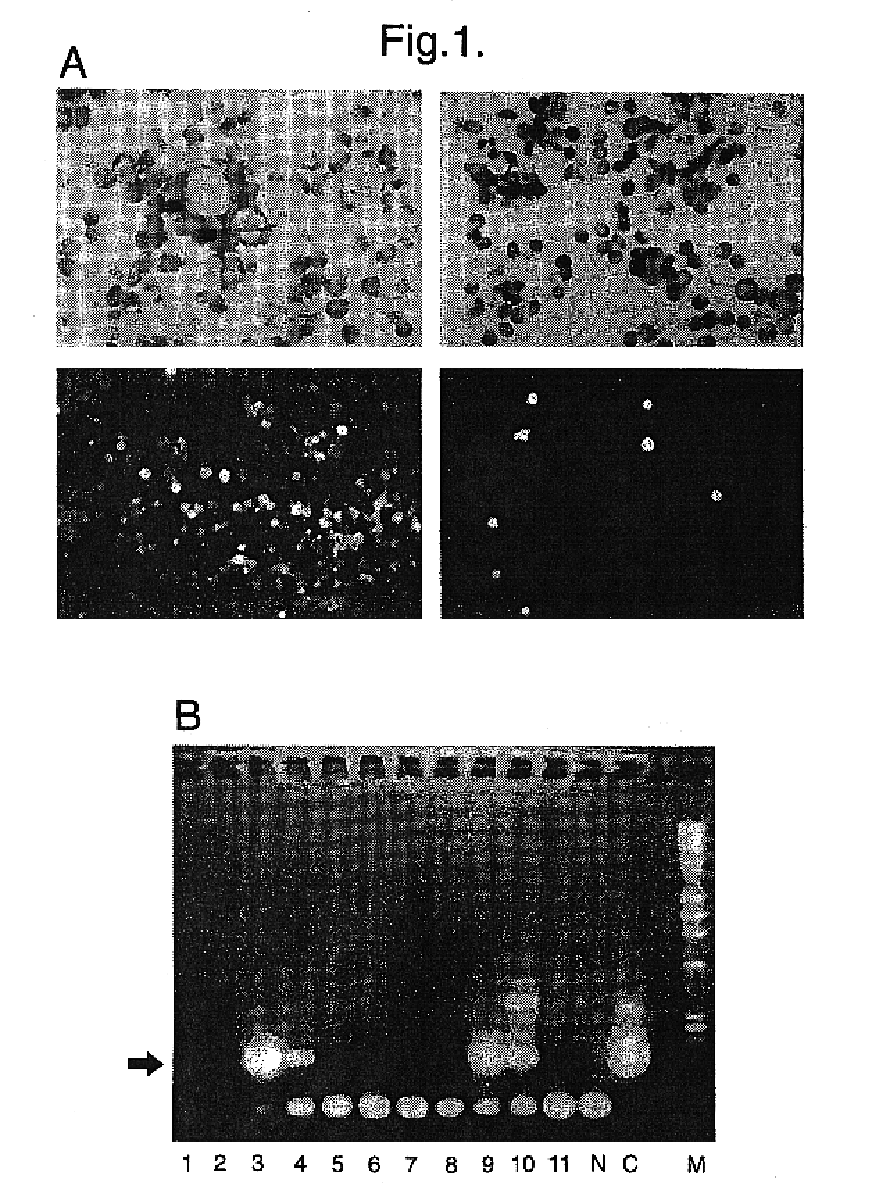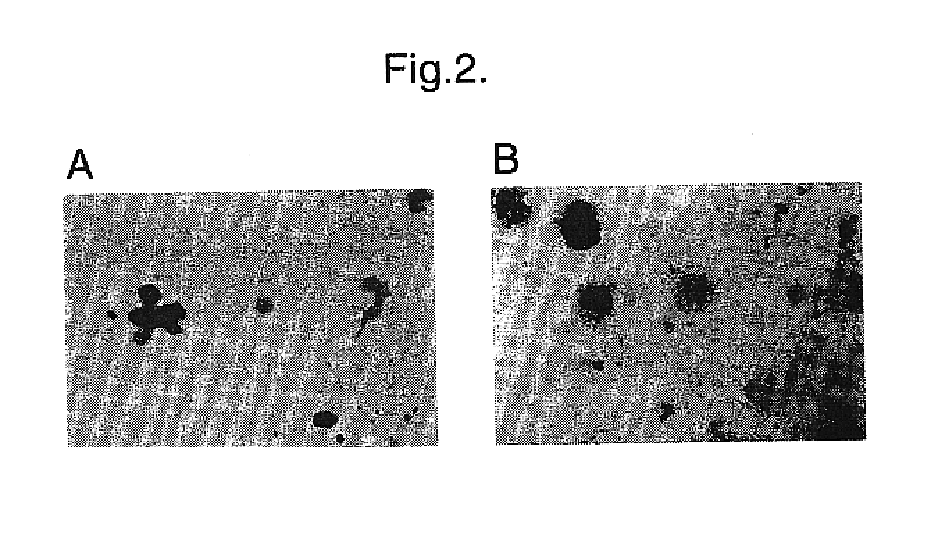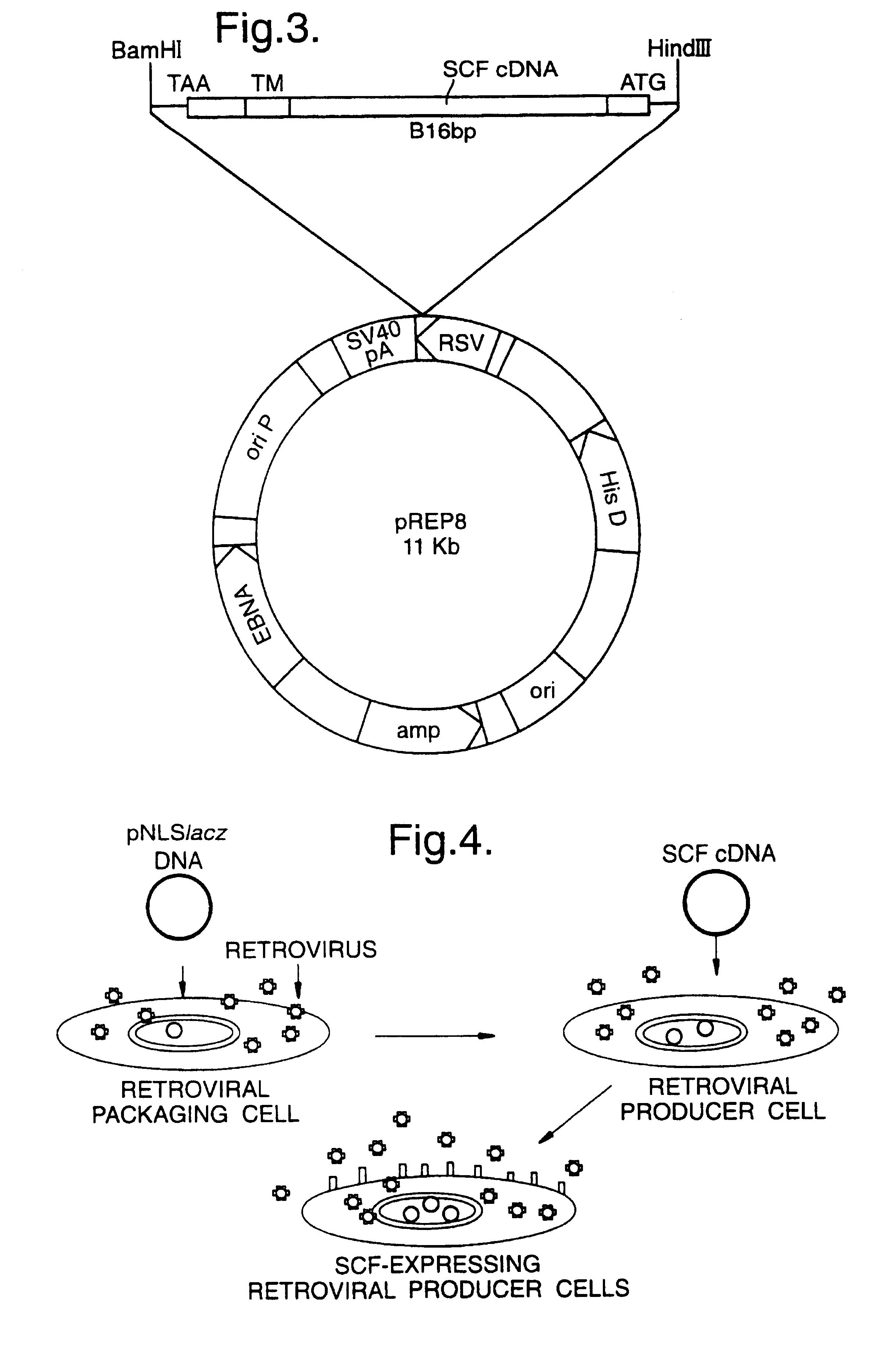Materials and methods relating to the transfer of nucleic acid into quiescent cells
a technology of nucleic acid and quiescent cells, which is applied in the field of materials and methods relating to the transfer of nucleic acid into quiescent cells, can solve the problems of many problems preventing the realisation of the promise of these techniques, unable to achieve permanent corrections, and unable to draw conclusions from this work regarding phscs
- Summary
- Abstract
- Description
- Claims
- Application Information
AI Technical Summary
Benefits of technology
Problems solved by technology
Method used
Image
Examples
example 2
Retroviral Transduction using Populations of Cells Isolated from Umbilical Cord Blood
We carried out a transduction experiment similar to those described above using haematopoietic progenitor cells obtained from human umbilical cord blood. Progenitors were selected from cord blood using the Macs.TM. (Miltenyi Biotech) system to isolate CD34+ progenitor cells (15). The CD34+ population in cord blood is made up extensively of quiescent cells (13, 16). These cells were transduced in vitro as described above by co-culture for 48 hours in the presence of the nlsLacz producers or the LacJP producers. The cord blood cells were then harvested and pelleted onto microscope slides and stained for .beta.-galactosidase activity as described above. Cells that had been exposed to the nlsLacZ producers had a low proportion of blue-staining cells (80%) . In addition, blue-staining colonies formed by subsequent growth of these populations of cells in semisolid media were only found in cultures derived...
example 3
Retroviral Transduction of Haematopoietic Stem Cells using a Retroviral Packaging Cell Line Expressing Surface Bound SCF
(a) Production of the Retroviral Packaging Cell Line
The cell line 1MI-.DELTA.SCF was constructed as follows: the parent producer cell line 1MI was derived from the Am12 packaging cell line (1), by calcium phosphate-mediated DNA transfection, using the retroviral vector encoding the p47-phox cDNA we described previously (2), with the exception that the neomycin resistance cassette was removed. The retroviral backbone is derived from the pBabe series of vectors described by Morgenstern et al (3). High titre producer clones were then selected by "dot blot" analysis of successful transfectants. The 1MI producer line was then transfected as described above using the plasmid pJP2 (FIG. 3) encoding the membrane-associated form of the human stem cell factor (SCF). Cells expressing SCF were selected using histidinol. Individual clones were grown out and tested for expressio...
example 4
Production of a Retrovirus Displaying Surface Bound Growth Factor as an N-terminal Extension of the Viral Envelope SU Protein
(a) Construction of Chimeric Envelope Expression Plasmids
Plasmids were created encoding chimeric envelopes in which stem cell factor (SCF) or Flt3 ligand (FL) is fused to the first codon of the SU envelope glycoprotein as a factor Xa cleavable or non-cleavable N-terminal extension of the 4070A (amphotropic) murine leukaemia virus (MLV).
SCF and FL cDNA was PCR amplified and tailed with Sfil and Not 1 restriction sites. The PCR products were cloned into existing chimeric envelope expression plasmids EA1 and EXA1 (10) after digestion with the restriction enzymes Sfil and Not 1. FIG. 8 shows a diagrammatic representation of the plasmid constructs. The sequences of all the constructs was confirmed by dideoxysequencing.
(b) Production of Viruses
The chimeric envelopes and control amphotropic (4070A) envelopes were expressed in TelCeB.6 complementing cells, which expre...
PUM
| Property | Measurement | Unit |
|---|---|---|
| time | aaaaa | aaaaa |
| surface bound | aaaaa | aaaaa |
| concentration | aaaaa | aaaaa |
Abstract
Description
Claims
Application Information
 Login to View More
Login to View More - R&D
- Intellectual Property
- Life Sciences
- Materials
- Tech Scout
- Unparalleled Data Quality
- Higher Quality Content
- 60% Fewer Hallucinations
Browse by: Latest US Patents, China's latest patents, Technical Efficacy Thesaurus, Application Domain, Technology Topic, Popular Technical Reports.
© 2025 PatSnap. All rights reserved.Legal|Privacy policy|Modern Slavery Act Transparency Statement|Sitemap|About US| Contact US: help@patsnap.com



